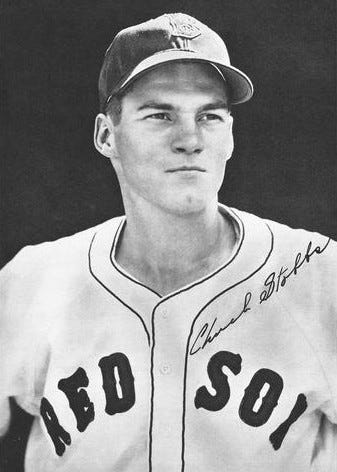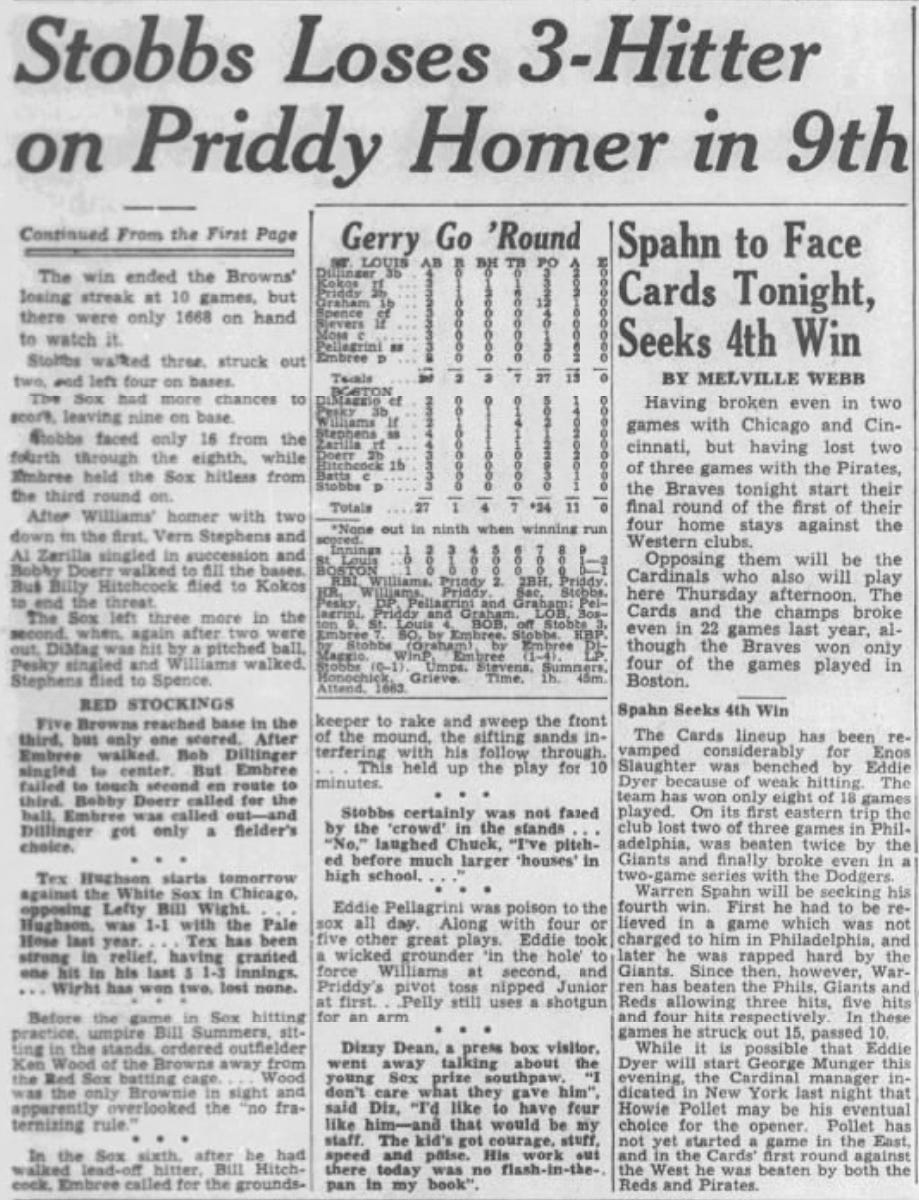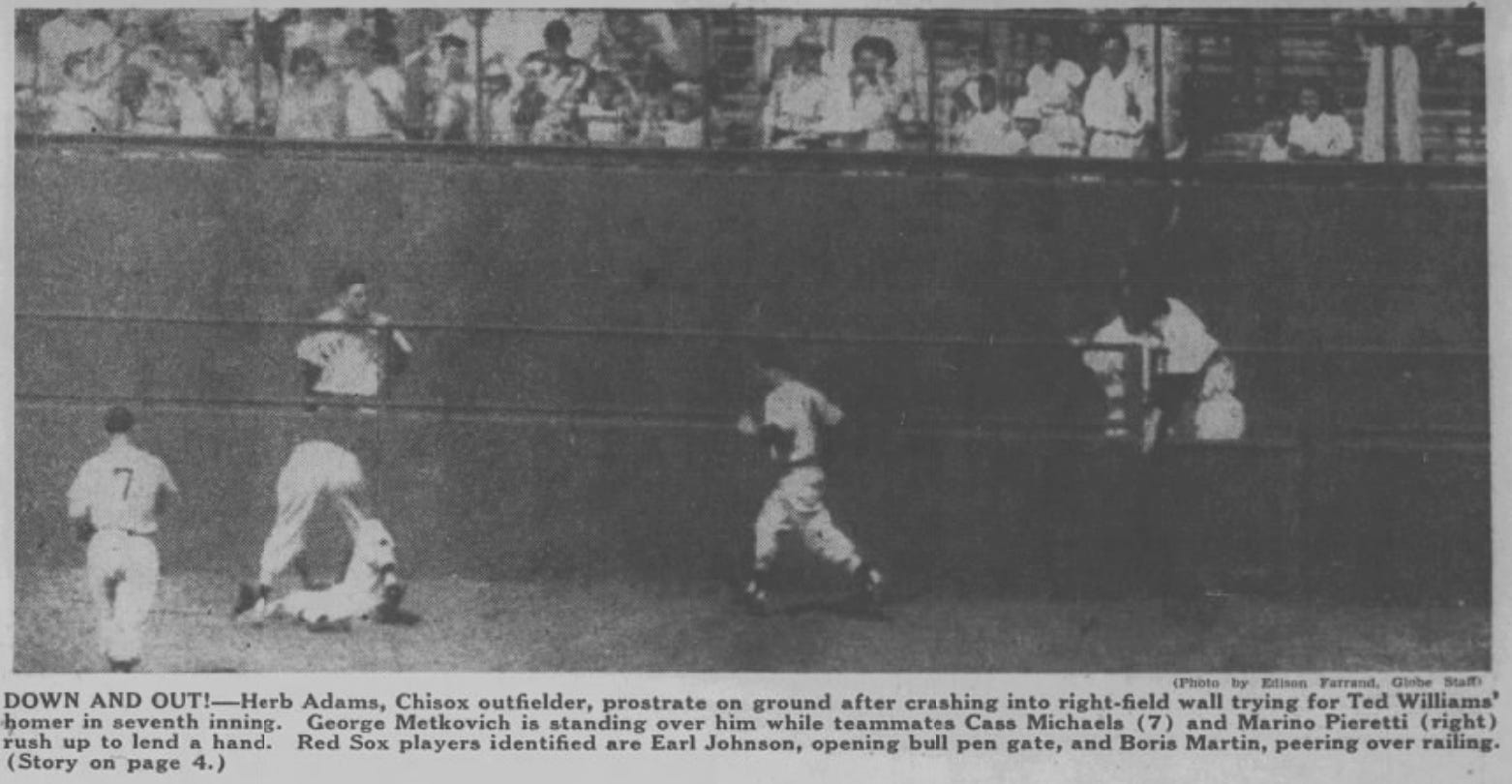The Bonus Baby
Those of you who have followed the baseball offseason know that there’s a lot of upset feelings about the Dodgers signing all the good players.
Actually, this is nothing new. In fact, in the wake of World War II, the threat of certain teams gobbling up all the good players was so frightening that baseball came up with the “bonus baby” rule.
As Wikipedia explains, this rule stated that a team had to keep a kid on the Major League roster if he signed a contract with a signing bonus of $4,000 or more. With active rosters limited to 25 men, this meant that teams really had to plan ahead for these kids. If a team didn’t comply with the rule the player would go through the waiver process, meaning that the team would wind up getting nothing for that bonus money.
We’ll talk in more detail about the bonus baby rule later on, as well as the complex waiver rules. Today, though, we want to focus our attention on Chuck Stobbs, one of the original bonus babies.
Stobbs was one of those hard luck bonus babies. He found himself on the Red Sox roster starting in 1947, after signing for the club for a whopping $50,000 bonus. He appeared in four games in September 1947 at the young age of 18:
Stobbs also took up a roster spot all season long in 1948, despite appearing in only 6 games all season:
Though his ballooning ERA and control issues might make him look like a bust, keep in mind that he had only pitched 16 innings after these two seasons. It’s not like he was given a completely fair chance to prove himself.
This was one of the major problems with that bonus baby rule. Young players who had a lot of promise but might not be fully ready for the major league level were forced to sit on the bench and watch for two whole seasons. The manager had to walk a precarious line between giving these kids enough time to develop and actually winning ballgames.
As much as I dislike the farm system, there is something to be said for giving young players the chance to develop before they hit the big leagues. If all minor league teams were independent, there’s a very real chance that we’d see a lot of Chuck Stobbs types in the majors.
Stobbs had a quiet start to 1949 — but at least he was given a chance to show himself. In Summer of ‘49, David Halberstam shares this anecdote about what things were like for Stobbs when Joe McCarthy first came on as Red Sox manager:
As usual, Halberstam doesn’t let the facts (Stobbs signed in 1947, not 1948) get in the way of a good story.
After a few relief appearances, Chuck had his first real chance in the majors on May 10 in St. Louis. And this game was a heartbreaker, earning him a spot on the front page of The Boston Globe:
Despite the loss, though, Stobbs had showed that he belonged.
After two more no decision starts and a few long relief appearances, Stobbs was given the chance to start at home against the White Sox on June 19.
Boston was in the middle of a heat wave that June — one that took the headlines away from political attacks that Harvard was “too liberal” (i.e. communist):
The real heat, though, was at Fenway, where Stobbs broke through for his first victory.
It must have been a heck of a game to watch in that heat, as some of the photos attest:
And, as usual in those days, Gene Mack was on board to create a cartoon version of the proceedings:
In the end, Stobbs didn’t quite get 20 wins, but he did manage 11 in 1949. That’s still a respectable total for a kid who was only 20.
However, Stobbs has fared a bit better in my 1949 Diamond Mind Baseball replay. I’m currently playing the games of June 30th (I’ve been slightly delayed once again), and Chuck looks really good:
Though lefties have hit him hard, Chuck has managed to stay in there, showing a respectable 6-1 record with a lot of baseball left to play. And you’d better believe I’m going to give him more than 19 starts in my project.
















